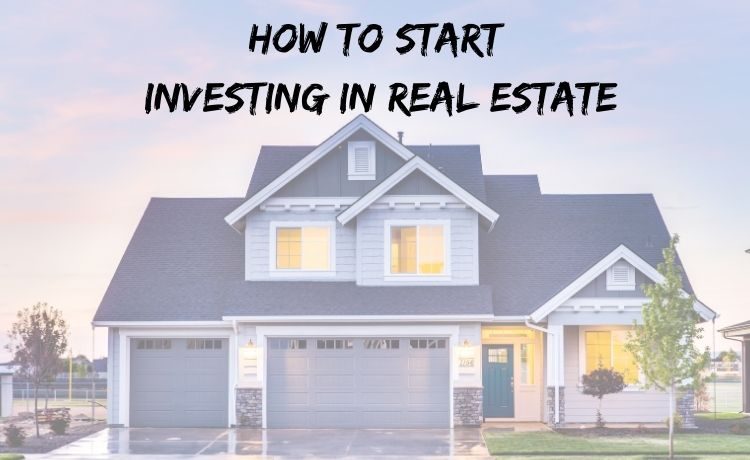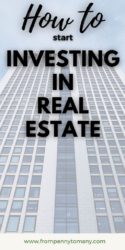Real estate has always been one of the most reliable and safest ways to invest your money. Still, many people are hesitant to invest their savings into real estate, which is understandable because large sums of money are involved in such investments. In this article, we discuss two strategies of how to start investing in real estate. Each strategy has its pros and cons. It’s up to you what suits you best.
Why invest in real estate
When looking from a macro perspective there are a few global trends why investing in real estate is interesting.
There is a housing shortage in many countries, the world population is growing rapidly, and the average age of people is increasing. More people need a place to live in. Therefore, on a global scale, there is a constant demand for housing which can drive housing prices up.
Unfortunately, this doesn’t necessarily mean that the house where you want to invest in becomes more valuable, but it can be a trend indicator for the long term. It can also flatten the curve, which can cause less volatility in the real estate market overall.
Next to these global trends, real estate comes with investment advantages that are uncommon in other types of investments, such as capital appreciation, tax advantages, and the generation of cash flow.
As you can see there are plenty of reasons why you should invest in real estate.
Real estate investment strategies
With every investment there comes risk, and there are times that a downward trend in real estate is predominant, but there are plenty of moments that the market recovers and goes up as well.
How an investor can deal with these situations says something about which real estate investment strategy works best for you. So, how to start investing in real estate depends on the risk you are willing to take.
We discuss two real estate investment strategies that you can use to start with your investment journey. The first investment strategy is known as the BRRRR method and focuses on investing with loans or mortgages. The second strategy is the opposite of BRRRR. In the second strategy, you use your own money (savings) to invest in real estate. Both strategies work pretty well and have their advantages and disadvantages
What does BRRRR mean
What does BRRRR mean? BRRRR is an abbreviation of Buy, Rehab, Rent, Refinance, Repeat. The focus of this strategy is to have a passive income from real estate over time. We explain the four steps of BRRRR below to give you an idea of what it means.
- Buy – You buy a property below market value and finance this with a mortgage. Often this is a fixer-upper.
- Rehab – You renovate the property and make it attractive for tenants to live in.
- Rent – You rent out the property and you get a passive income from it
- Refinance – Because of all the renovations that you did the property’s worth is increased and you go to the bank to cash out the equity
- Repeat – Start with step 1 again.
With this strategy, it’s relatively easy to scale to a big real estate portfolio. You don’t need a lot of capital because the bank will provide you the mortgage you need to finance your property. After you have finished with step 4 you can repeat all 5 steps over and over again.
Because the property is improved (in step 2) the value of the property is increased as well. This value increase leads to capital appreciation. The rent that you receive in step 3 is providing you the cash flow that you want for your passive income.
 BRRRR and costs involved
BRRRR and costs involved
The BRRRR strategy has a lot of benefits. Unfortunately, there are a few downsides to this strategy as well. We sum up a few of them below.
- You need a loan/mortgage to finance your investment. Having a loan for your investments can create tax advantages but also come with risks. What happens when you lose all or some of your tenants? Are you still capable of paying the mortgage for your investment property when that happens?
- You spend a lot of money in the rehab stage. What happens when the appraisal doesn’t come out as expected?
- What happens when you need sudden maintenance? You need a new roof, or the foundation of your property needs to be improved. Major costs are involved with this. Can you increase the mortgage of the property for this? Is the bank willing to do this, especially when you have multiple mortgages on other investment properties as well?
The mortgage that you take on a property comes with interest. Yearly interest rates of 1-2% are pretty common nowadays. As a property owner, you need to pay certain taxes on the value of a property.
Overall, there are many costs involved in this strategy, and the cash flow can evaporate quickly. We think that this strategy is a margin game and can be pretty fragile when not applied correctly.
Saving for an investment property
Another strategy is saving for an investment property. The biggest difference with the BRRRR strategy is that you are not using a mortgage or any kind of loan to finance your real estate properties. First, we give you some advantages of this strategy.
- You can always go to a bank to mortgage one or more of your real estate properties. You still have this possibility when something unexpected or unforeseen happens. For example when the property needs a new roof or the foundation needs to be repaired or upgraded.
- It’s not a major issue when you can’t find new tenants because the running costs are relatively low.
- Without the costs of a mortgage, your profit margin is higher and your passive income is higher.
- The overall risks are lower when you use this strategy.
Unfortunately, real estate is not cheap, and you need to bring a big amount of savings to finance your investment property. This capital needs to come from somewhere, and you likely have to save it before you are able to purchase a real estate property. It can therefore take a long time if you are saving for an investment property from your salary.
Therefore a big downside of this strategy is the time that you need to gather the capital.
Related posts:
How much should I have in savings
10 big mistakes investing in rental property
Conclusion
In addition to BRRRR or using your own savings for purchasing real estate, there are plenty of other real estate investment strategies as well. We think that the two strategies that are covered in this blog are the most common ones.
The BRRRR strategy is focused more on the capital appreciation part because a mortgage needs to be paid and therefore the cash flow in the short term is lower when compared to the savings strategy.
The savings strategy is better for obtaining a passive income from your real estate. Capital appreciation is lower in this strategy because it’s probably not so easy to acquire real estate from your own savings than from a mortgage. It’s likely that your real estate portfolio is smaller in this strategy.
If you don’t know how to start investing in real estate and don’t have any capital, BRRRR can be a good way to set your first steps. Mitigating many of the risks that are involved in the BRRRR strategy can be done by using your own capital in your real estate portfolio.
You are not limited to using one strategy and finding a mix of both strategies is of course possible.
GET THE FINANCIAL FREEDOM TOOLKIT
We share a complete extensive explanation about how to start investing in real estate in our Design Your Financial Freedom Toolkit.


 BRRRR and costs involved
BRRRR and costs involved



